What to Know about Safety Data Sheets (SDS) - Including Lubricants
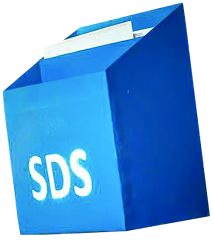 For many of us, getting oil or grease on our hands may seem harmless. In fact, the inconvenience of the mess it makes is usually considered more than the health and safety factors. But certain types of lubricants, especially in larger quantities, can pose significant concerns to our health and the environment when not managed correctly. Many have been made more aware of this with media attention in recent years, but there have been actions taken to communicate the impact and safety measures of lubricants for over a century. These are written and provided in a document called a Safety Data Sheet (SDS).
For many of us, getting oil or grease on our hands may seem harmless. In fact, the inconvenience of the mess it makes is usually considered more than the health and safety factors. But certain types of lubricants, especially in larger quantities, can pose significant concerns to our health and the environment when not managed correctly. Many have been made more aware of this with media attention in recent years, but there have been actions taken to communicate the impact and safety measures of lubricants for over a century. These are written and provided in a document called a Safety Data Sheet (SDS).
- If the lubricant is spilled, how should it be cleaned up, and with what materials?
- How should the lubricant be disposed of properly?
- What type of personal protection (masks, gloves, etc.) should be used when handling the lubricant?
Questions like these are a few examples of what is answered by the Safety Data Sheet. Lubricants are just one of the many kinds of substances that are required to have Safety Data Sheets provided by the manufacturer and easily accessible anywhere they are used, stored or otherwise possibly exposed to humans or the environment. For anyone who has worked in an industrial environment, particularly in maintenance, the availability and purpose of these documents are a routine reminder as part of safety training. Nevertheless, many of the key aspects of these documents remain unclear to those who handle these lubricants. And for anywhere where exposure is a more frequent occurrence, like when adding grease or oil to a machine, this is particularly important.
Here are a few things to know about Safety Data Sheets (SDS):
What is a Safety Data Sheet? Safety Data Sheets (SDS) are a required Hazard Communication Standard (HCS) for information about a potentially hazardous material’s chemical and physical properties, particularly how the material should be handled and how exposure to the material could impact health, safety and the environment.
Who Develops Safety Data Sheets? Safety Data Sheets are prepared by the manufacturers for all chemicals, including lubricants, particularly those that are known to pose a hazard to health and safety.
What Hazard Concerns Could be Identified by the Safety Data Sheets? Hazards relating to physical, chemical, health and the environment are identified and detailed in sections 2 and 3 of the Safety Data Sheets. Further sections provide recommended measures for first aid (section 4), fire-fighting (section 5), actions to take for accidental release (section 6), toxicological information (section 11) and more.
Who Needs to Know about Safety Data Sheets? While it is not uncommon for all personnel tasked with work in areas where these chemicals are used to be provided awareness training on these documents, it’s particularly important for those responsible for the selection and management of chemicals onsite. For example, anyone who manages the storage of lubricants or handles their transportation and application into machines must have access to and an understanding of the Safety Data Sheets.
Who Regulates and Defines the Format for Safety Data Sheets? While the Globally Harmonized System (now aligned to the Hazard Communication Standard) for the SDS format is universal, each country dictates how and when these sheets are to be used. In the United States, Safety Data Sheets fall under the jurisdiction of the Occupational Safety and Health Administration (OSHA).
What is the Format of the Safety Data Sheets? Safety data sheets are formatted in a standardized 16-section layout, allowing for consistency across industries. The sixteen sections are listed in the adjacent infographic (see later text).
Who Should be Responsible for Managing Safety Data Sheets? Typically, these practices are monitored by safety personnel and managed by inventory personnel. Ultimately, anyone who works in an area where exposure to chemicals, including lubricants, is a possibility should be provided the necessary health and safety precautions as well as the necessary SDSs.
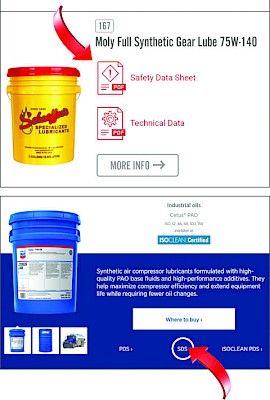 Is Technical Information, Such as Performance Properties, Provided on the Safety Data Sheets? While the Safety Data Sheets contain quite a bit of technical information, the details are intended for only the purposes of safety, health, environmental impact and the like. However, most lubricant manufacturers provided Technical Data Sheets (TDS) (sometimes called Product Data Sheets) for more technical and marketing information about how the lubricant should be selected, precautions for use and overall performance properties.
Is Technical Information, Such as Performance Properties, Provided on the Safety Data Sheets? While the Safety Data Sheets contain quite a bit of technical information, the details are intended for only the purposes of safety, health, environmental impact and the like. However, most lubricant manufacturers provided Technical Data Sheets (TDS) (sometimes called Product Data Sheets) for more technical and marketing information about how the lubricant should be selected, precautions for use and overall performance properties.
Where Can Safety Data Sheets be Found? These are free publications that are easily accessible online through the manufacturers’ websites, but they can also be provided directly by the supplier. Typically, on any page where the lubricant information is identified, both the Safety Data Sheet and the Technical Data Sheets can be downloaded.
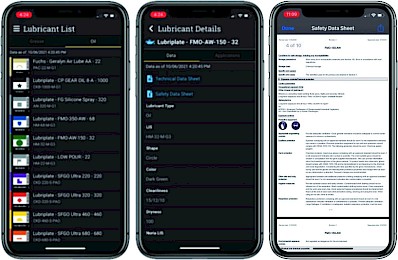 Where Should Safety Data Sheets be Stored? At a minimum, they need to be made available physically in a printed form in areas where lubricants are more frequently stored. Many facilities print and bind the sheets and place them in an accessible location, like a lube room or warehouse. In recent years, SDSs are being made more available in a digital database. There are safety and inventory software programs that can help with this, for example, with services provided by Safetec (hsi.com).
Where Should Safety Data Sheets be Stored? At a minimum, they need to be made available physically in a printed form in areas where lubricants are more frequently stored. Many facilities print and bind the sheets and place them in an accessible location, like a lube room or warehouse. In recent years, SDSs are being made more available in a digital database. There are safety and inventory software programs that can help with this, for example, with services provided by Safetec (hsi.com).
There are also lubrication management programs, like LubePM (LubePM.com), that conveniently list all the lubricants in the plant and where they are applied; LubePM also makes Safety Data Sheets and Technical Data Sheets easily available for each lubricant on mobile devices.
What is the Most Important Thing to Know About Safety Data Sheets? Emergency phone numbers are listed in Section 1 - if someone is injured, poisoned or made ill by a lubricant, you can call this number for more information; it is available 24/7.
Safety First. Often, lubricants (and other chemicals) are routinely taken in and out of areas in the plant. Sometimes there may be uses for lubricants that create risks that some personnel are unaware of, including the risks created if mixed or exposed to other lubricants. The goal of Safety Data Sheets is to always communicate any important information that can maintain a high level of safety in the workplace, especially in industrial environments where exposure is common, such as with lubricants. While handling and applying lubricants to machines, it’s not uncommon for there to be fumes and skin contact. In most cases, this is inconsequential if these exposures are limited; but certain lubricants can be much more harmful when not properly considered. Safety Data Sheets can be comprehensive in listing these possible concerns, and whenever uncertain about any possible risks, always reach out to the emergency contact information provided for clarity.
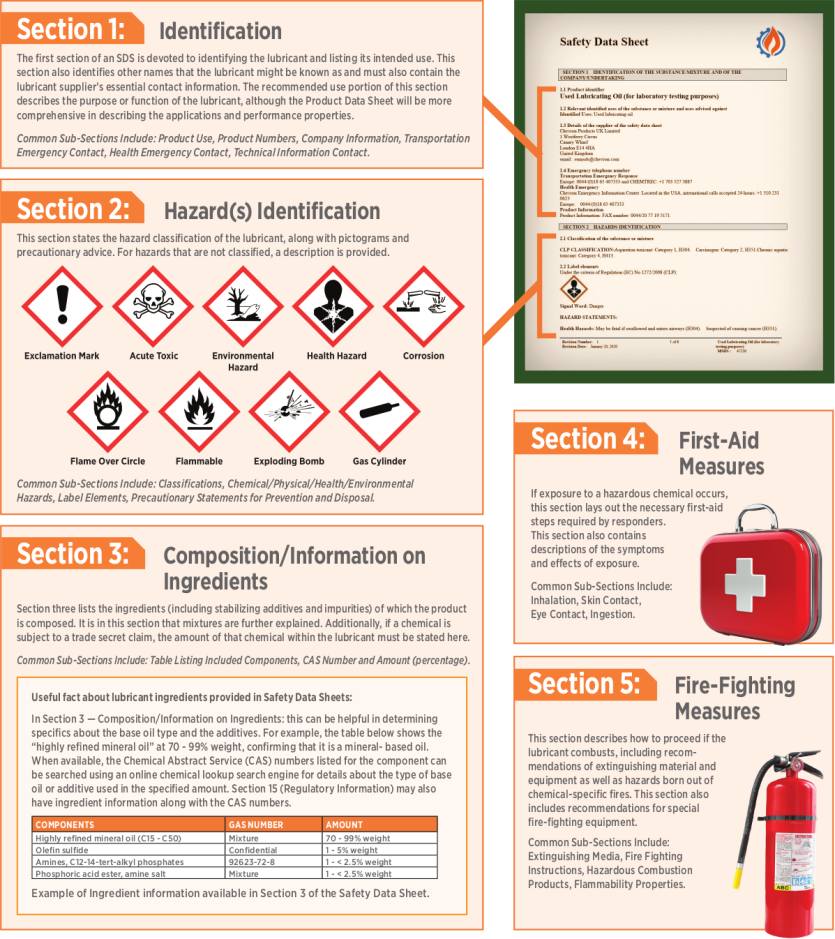
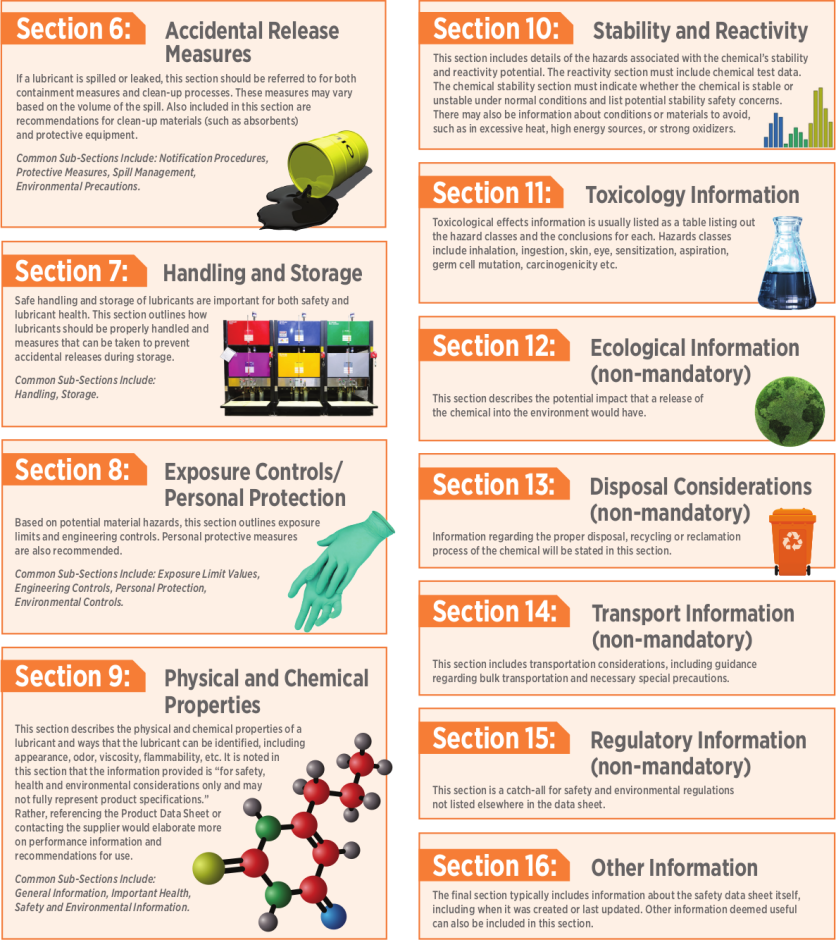

No comments:
Post a Comment